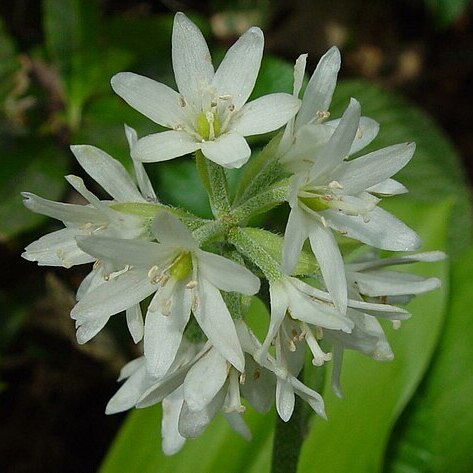A herb which keeps growing from year to year. It is about 1 m high. It has a creeping rootstock about 5 mm thick. It is covered with fibrous sheaths. There are 3-5 leaves. The leaves do not have leaf stalks. The leaf blades are oblong to sword shaped and cup shaped. They are 8-25 cm long by 3-16 cm wide. The edges are hairy when young. There are 3-12 flowers in a group. The flowers are white or sometimes bluish. They occur in racemes at the ends of branches. The fruit is a blackish-blue berry. It is round or oval and 7-12 mm long by 7-10 mm wide. It has many seeds.

